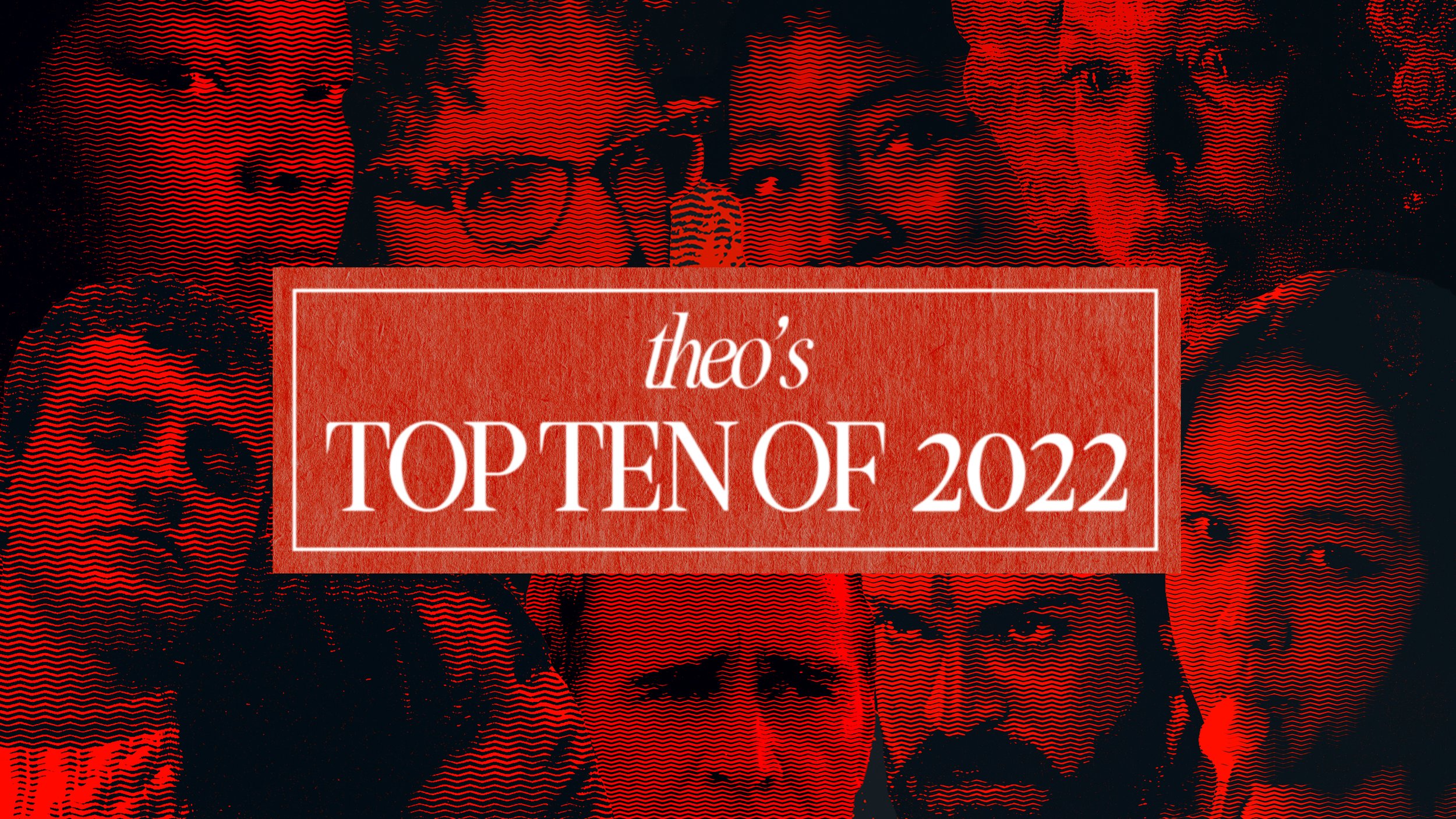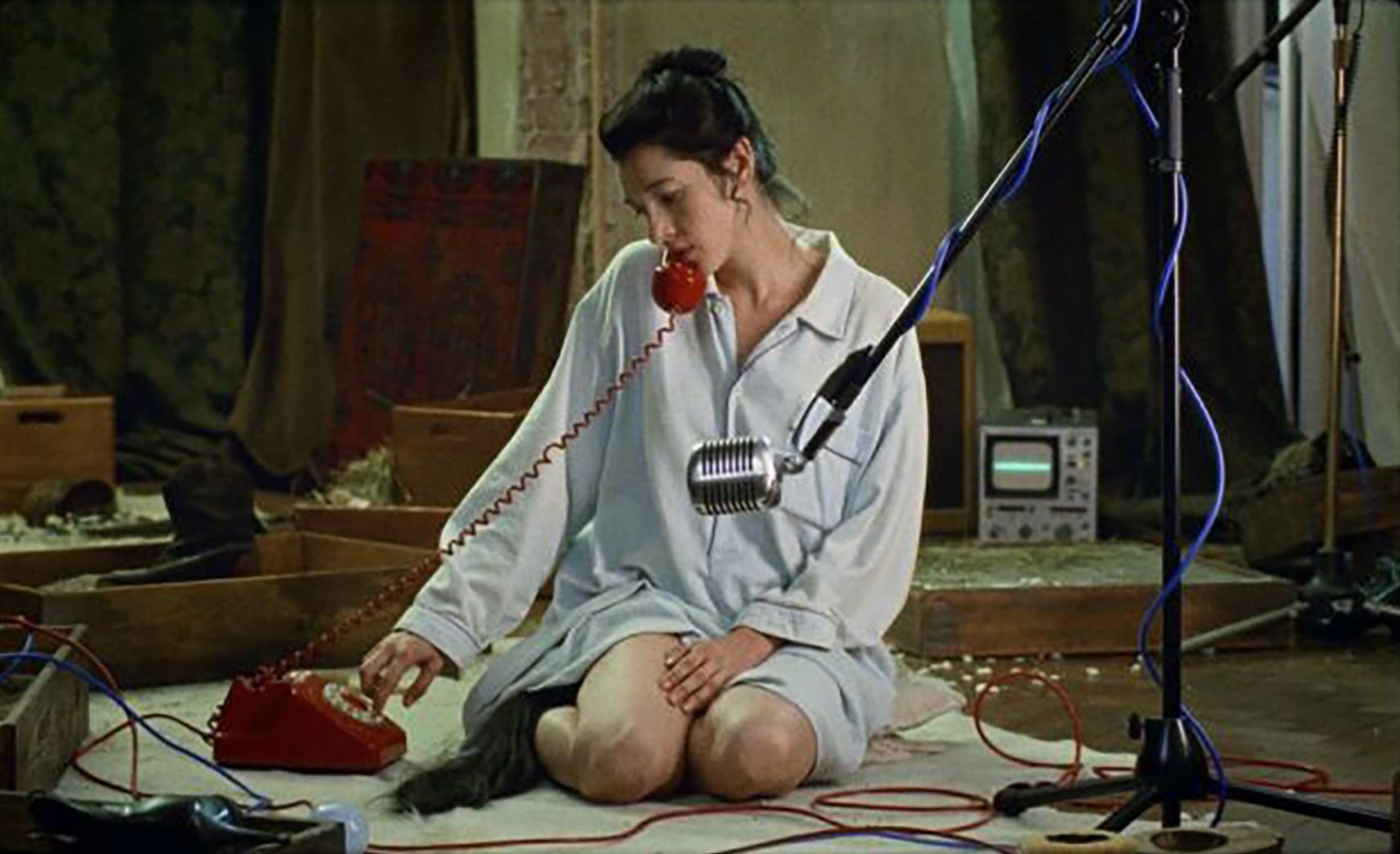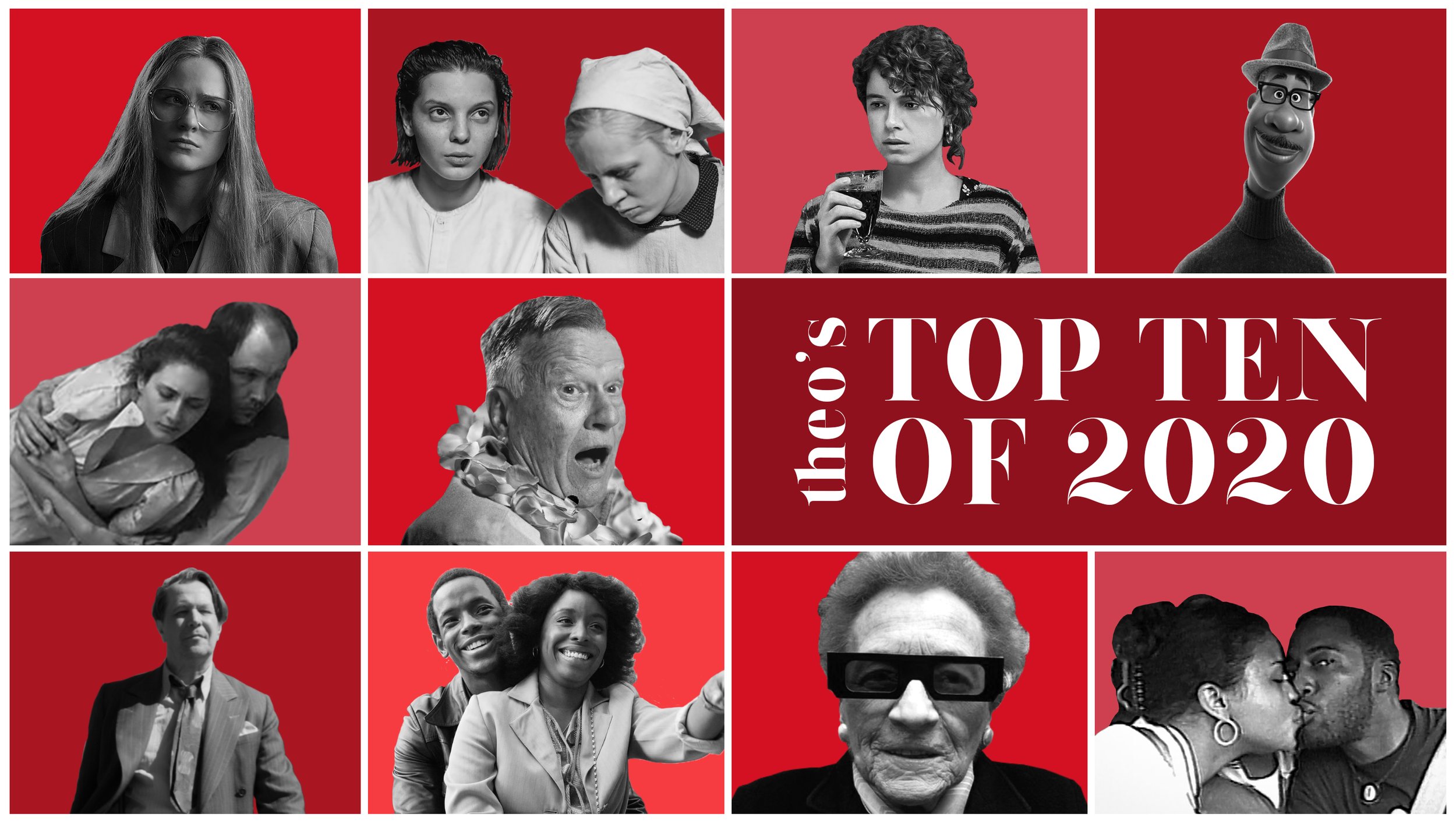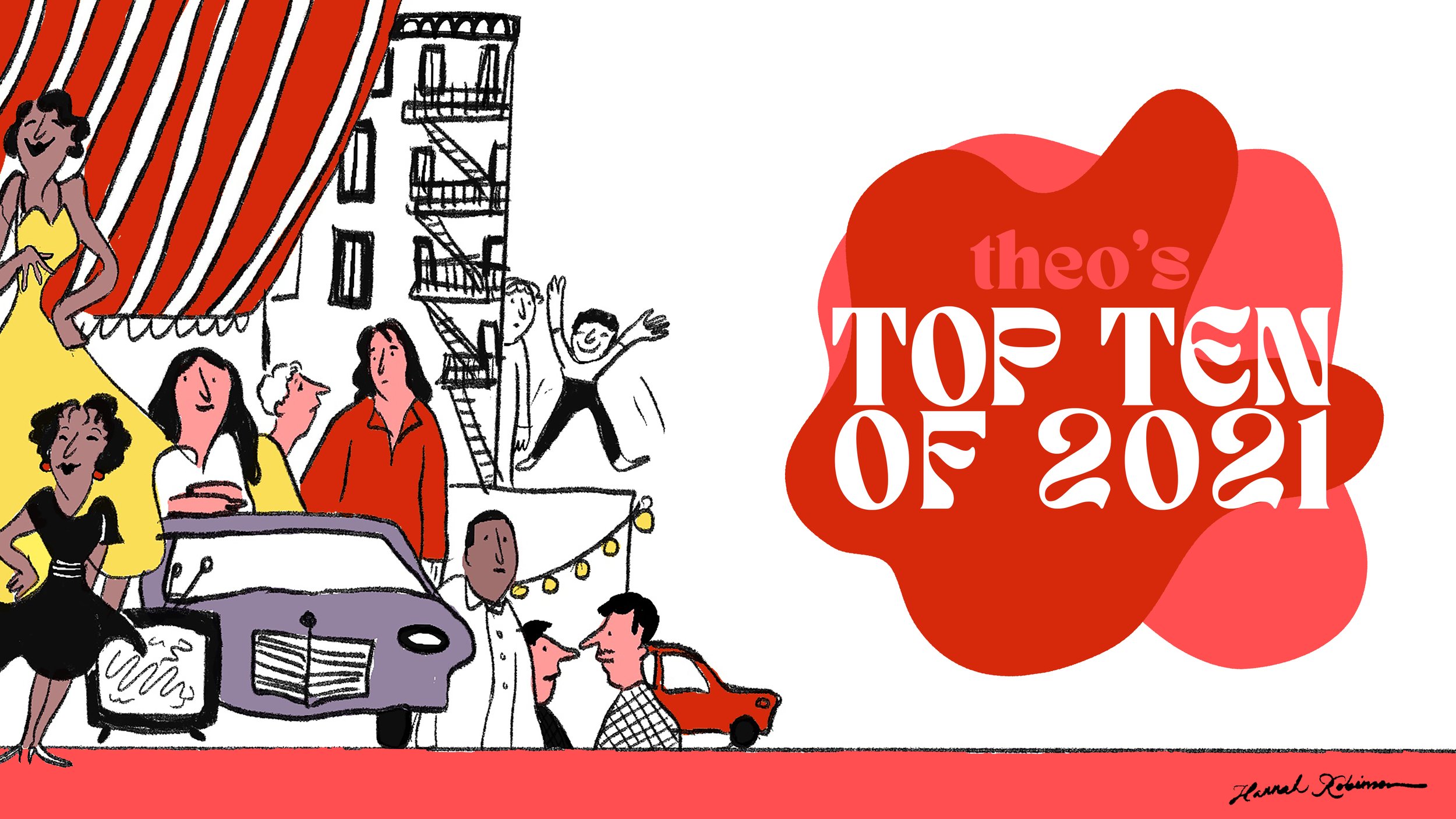Theo’s Top Ten Films of 2022
“Some things we can’t be clear about, and if I’m lying, I can’t know why.”
It’s hard to spot a single pattern to my favourite films of the year, though I can say that 2023 was especially good for big-screen superspectacles: ludicrously daring aerial stunts and an outrageous rescue from a flaming bridge (Top Gun: Maverick, RRR), multiversal madness involving enchanted sheet music and hot dog fingers (Doctor Strange in the Multiverse of Madness, Everything Everywhere All At Once), Vikings battling and lovers dancing atop volcanoes (The Northman, Fire of Love), and some serious pelvis-thrusting (Elvis). The last film I saw in theatres in 2022 was Avatar: The Way of Water, an astonishing feat of digital filmmaking in service of a preposterously silly story — though perhaps all the more fun for it.
There were quieter films, too, though their ambitions were no less grand. Joanna Hogg’s The Eternal Daughter provided a delightfully spooky coda-of-sorts to last year’s The Souvenir Part II, while Mia Hansen-Løve’s One Fine Morning was a moving snapshot of what it might feel like to lose one person at the same time as finding another. Crimes of the Future saw legendary director David Cronenberg returning to his early corporeal fascinations with added political urgency, and We’re All Going to the World’s Fair, the debut feature from Jane Schoenbrun, put a distinctly internet-age spin on the horror genre, to captivating effect. Robert Zemeckis and Guillermo del Toro both had a stab at Pinocchio, the latter clearly the more imaginatively realised (though neither quite as stunningly, er, wooden as the English dub of Pinocchio: A True Story).
As ever, seeking out old films got in the way of seeing new ones; first-time-watch highlights included All About Eve, The New World, and the shorts screened at the Barbican’s Carolee Schneemann retrospective. Seeing Guy Maddin’s films The Saddest Music in the World and My Winnipeg kicked off something of an obsession I’m yet to shake. My favourite piece of audiovisual media of the year, truth be told, was an Instagram reel.
If you’re anything like me, you might have slight list fatigue; 2022 ended with Sight and Sound magazine’s once-in-a-decade poll of the best films of all time, which meant months and months of film writers getting philosophical about lists — how to make them, whether they do more harm than good — followed by fierce online debate about whether its winner (Chantal Akerman’s Jeanne Dielman, 23, quai du Commerce, 1080 Bruxelles) was a worthy one. (New Year’s resolution: spend less time on Twitter.) Only time will tell if any of the films I’ve chosen below have what it takes to crack a future version of the Sight and Sound list, but for now it’s enough for me that I loved them all.
—
Honorable Mentions
Crimes of the Future (David Cronenberg), Enys Men (Mark Jenkin), The Eternal Daughter (Joanna Hogg), Everything Everywhere All At Once (Daniel Scheinert, Daniel Kwan), Foragers (Jumana Manna), Pinocchio (Guillermo del Toro), White Noise (Noah Baumbach)
—
10. Triangle of Sadness
The main thrust of the predictable backlash to Ruben Östlund’s Palme d'Or winner Triangle of Sadness was that its “eat the rich” satire of wealth and privilege was heavy-handed and self-congratulatory. Perhaps — it’s true that Östlund’s luxury-cruise-gone-wrong picks some easy targets — but if the last few years have taught us anything it's that the super-rich deserve nothing but utter contempt; much like Glass Onion, if the film isn't exactly going to empower the masses to take arms against our capitalist overlords, it’s at least hugely satisfying, and very, very funny.
It all works thanks to Östlund’s razor-sharp script, and an international cast more than capable of selling it: Zlatko Burić as a Russian fertilizer magnate who gleefully admits to selling “shit”; Woody Harrelson as the superyacht’s “Marxist” captain, an American with a serious drinking problem; and Dolly de Leon as a Filipino cleaner who overturns the chain of command when disaster inevitably befalls the ship. Triangle of Sadness is hilarious both in its carefully observed characterisations and broad slapstick, and was exactly the kind of riotous cinema experience I'd been craving.
—
9. fire of love
How’s this for an unlikely celebrity couple: the Alsatian volcanologists Katia and Maurice Krafft, whose love for each other was only matched by their insatiable desire to study volcanos as close-up as humanly possible. Edited together from the astonishing film and video footage that they shot over more than two decades, Sara Dosa’s documentary Fire of Love travels from volcano to volcano with the Kraffts, edging ever closer to the catastrophic Mount Unzen eruption of 1991 that would claim their lives.
Fire of Love makes no secret of the tragic destination for its fiery couple, though the tone remains fairly light-hearted, more Jacques Costeau than Werner Herzog (whose own film The Fire Within: Requiem for Katia and Maurice Krafft also released this year). Miranda July’s deadpan narration is suitably poetic and playful, and the couple’s antics are rather charming, if insane: in one scene, Maurice sails a flimsy rubber dinghy into a giant lake of sulfuric acid, much to Katia’s exasperation. “I am not a filmmaker,” says Maurice, sat at his editing table, “I am a wandering volcanologist forced to make films in order to wander.” Despite their protestations to the contrary, Dosa makes the case that the Kraffts were themselves attentive filmmakers, thoroughly capable of seducing us with the images that had so seduced them.
You can read Cinema As We Know It's review of the film here.
—
8. The Banshees of Inisherin
On a fictional isle off the coast of Ireland, in the early 1920s, well-natured Pádraic (Colin Farrell) arrives at the pub one afternoon to discover that his lifelong drinking buddy Colm (Brendan Gleeson) abruptly no longer wants to be friends with him. The reason he gives is so simple it can’t help but take on an existential character: “I just don’t like you no more.” Pádraic thinks he must be joking, but Colm is quite serious, and delivers an ultimatum — if Pádraic so much as talks to him, he’ll start to cut fingers from the hand used to play his beloved fiddle.
Banshees turns on the small question of what to do with our short time on this earth: do we dedicate our lonely lives to something greater than ourselves, as Colm wants to do with his music? Or is it enough to just be good, be nice, as everyone reassures Pádraic he is? Of course, Martin McDonagh — reunited with his In Bruges stars and finally back to his best as a screenwriter — is too attentive to the doubts, pride, hypocrisies, and other foibles of his characters to let it resemble a straightforward battle of ideas; both men deflate their respective philosophies, and it’s left to Pádraic’s sister Siobhán (Kerry Condon, a total revelation) to remind us that all the men on the island just are as dull as each other. Not that the underlying bathos of the scenario dims the pain of the break-up: though McDonagh’s blend of humour and melancholy is as bleak as ever, this is his most emotionally resonant work yet.
—
7. RRR
S. S. Rajamouli’s Telugu-language RRR — “Rise! Roar! Revolt!” — is based on the stories of two Indian anti-colonial revolutionaries of the early twentieth century, Alluri Sitarama Raju (Ram Charan) and Komaram Bheem (N. T. Rama Rao Jr.). Never mind that the pair never crossed paths in real life — Rajamouli not only imagines a meeting between the two, but stages it as an epic bromance between two quasi-superhumans who leap off bridges, wrestle tigers, shoot flaming arrows, and briefly engage in a Raj-bashing dance-off, which might well have been the single most entertaining scene I saw this year.
This is mythic historical fantasy at its most cartoonishly maximalist; within minutes everything has been dialled up to eleven, an intensity the film somehow maintains for three exhilarating hours. It’s the sort of bombastic action filmmaking that makes you realise just how stale the average Marvel flick is when it comes to choreographing thrills and crafting memorable images. If the film’s revolutionary credentials fall apart upon closer inspection (critics more knowledgeable about Indian politics than myself have accused of the film of fanning the flames of the far-right Hindutva movement), this should at least be a call to arms for action filmmakers working on a similarly massive scale, as well as a reminder to producers that “crowd pleaser” can mean so much more than nostalgic call-backs to existing IP.
—
6. Nope
It feels like something of a miracle that, following the popularity and critical adoration of his 2016 debut Get Out, writer-director Jordan Peele hasn’t been roped into helming some megafranchise or other, nor stuck to that film’s formula, and has instead ventured to increasingly strange and imaginative places while still centring the Black American experience. Peele’s latest takes as its starting point one of the very first moving images — Eadweard Muybridge’s sequential photographs of a galloping horse, and the forgotten Black man riding it — to kick off a sprawling allegory about the pleasures and horrors of the camera’s gaze, the historic links between Hollywood image-making and real-world exploitation and violence. Did I mention it’s a sci-fi Western?
Our protagonists are siblings OJ (Daniel Kaluuya) and Emerald (Keke Palmer), horse wranglers for film and TV who become convinced their ranch is being watched over by what appears to be a flying saucer. Resolving to capture “The Oprah Shot” that will earn them fame and fortune, they enlist the help of a UFO-enthused techie (Brandon Perea) and a Herzog-like filmmaker (Michael Wincott) with a taste for the extreme. What follows involves inflatable stick figures, a downpour of blood, and a thematically crucial subplot concerning a former child star and a crazed chimpanzee. Nope is an ambitious film that wants to have it both ways — a Spielbergian big-screen spectacle that is also a nuanced deliberation on the contaminated nature of spectacle itself. Only Peele could pull it off.
You can read Cinema As We Know It's review of the film here.
—
5. All the Beauty and the Bloodshed
Given that Laura Poitras’ most celebrated documentaries have often concerned overtly politicised characters— her 2014 Oscar-winner Citizenfour was about Edward Snowden — it might come as something of a surprise that the director’s latest takes as its subject the pioneering photographer Nan Goldin. Things make more sense if you know that Goldin has spent the last few years waging war on the Sackler family, major art-world donors who made their billions peddling OxyContin, a key drug in establishing America’s opioid crisis and the source of Goldin’s own struggle with addiction. All the Beauty and the Bloodshed provides an overview of Goldin’s remarkable life leading up to her founding of PAIN (Prescription Addiction Intervention Now), whose goal has been to pressure museums and galleries to finally sever their financial ties to the Sacklers.
More collaborator than mere subject, Goldin tells her story in her own words, from a nightmarish suburban childhood warped by mental illness, to the highs and lows of ’80s New York queer counterculture — including the period spent on the frontline of the AIDS epidemic. Poitras is patient with her edit, leaving plenty of space for digressions about Goldin’s nearest and dearest, as well as excerpts from her famed 35mm slideshows capturing them at their most intimate. Taken together, it makes the present-day scenes hit all the harder; PAIN stage protests that are emotionally raw as well as cannily cinematic (a shower of prescription papers thrown from the balconies of the Guggenheim makes for some particularly impressive images), and when survivors finally confront the Sacklers, it provides a stinging, but perfect, cap to a film worthy of its subject.
—
4. Piaffe
In the debut feature from visual artist Ann Oren, introverted protagonist Eva (Simone Bucio) is roped into working as a foley artist on a commercial for a dubious mood stabiliser; her job is to provide the sound for scenes of a horse in dressage. In her Berlin apartment, Eva tries padding a pair of heels on boxes filled with stones, sand, hay, in an attempt to approximate the sound of a horse’s trot — but back at the studio the ad’s obnoxious director is entirely unimpressed by her efforts: “A machine made this. I need a human!” Eva goes even further, tapping into her inner animal as she becomes increasingly immersed in the recording process. It’s not long before she begins to sprout a tail.
This is the kind of plot that lends itself to the body horror genre (elevator pitch: Cronenberg does Berberian Sound Studio), though that label doesn’t capture the essence of Oren’s largely sweet — if deliciously strange and sensual — tale of self-discovery. There’s some kinky stuff involving a botanist (Sebastian Rudolph) enraptured by Eva’s equine appendage, and then there’s Eva’s enigmatic sister Zara, whose time on screen is split between a psychiatric facility and a club dancefloor, and who is played by the non-binary artist Simon(e) Jaikiriuma Paetau.
The interactions between the siblings suggest the film’s interest in bodies that refuse to be confined by normativity. Or maybe not; Piaffe is as far from commercial cinema as this list goes, and Oren doesn’t suffer from the usual narrative-filmmaking anxiety of needing to explain everything (or anything, for that matter). Not that it’s inaccessible; shot on tactile 16mm and with a soundtrack that might as well be ASMR, this is first and foremost a film whose pleasures lie in its gorgeous visual and sonic textures.
—
3. Decision to Leave
Every problem solved by new technology is another problem created for mystery movie writers; even the cherished cry of “there’s no phone signal!” has become increasingly tenuous in our hyperconnected world (not that it stopped this year’s most aggressively Gen Z film, Bodies Bodies Bodies, from hinging its whodunnit on this trope). For the filmmaker, the question isn’t just how to integrate modern technology into the narrative — it’s how to make it cinematic. In Decision to Leave, Park Chan-wook finds more creative answers to this problem in a single scene than most directors would over the course of an entire film: Park mounts tension with mobile step counters and GPS tracking, stages conversations using voice translation apps, creates interesting compositions using computer monitors, even frames characters’ faces through the underside of their screens — all in the service of a story of forbidden romance made more all the more tragic by its constant technological mediation.
The plot is pure Hitchcock: an overworked Busan-based detective (Park Hae-il), more attached to his job than his wife, is tasked with investigating a wealthy businessman and climbing enthusiast found dead at the foot of a mountain — and soon finds himself falling for this man’s enigmatic young widow (Tang Wei), who happens to be the case’s prime suspect. This is Park’s most classically packaged feature, substituting the overt erotic charge of his previous film, The Handmaiden, for a more subdued — and pained — sense of yearning, that still manages to be thrillingly sensual.
—
2. saint omer
Based on a real-life French court case, Saint Omer follows pregnant novelist Rama (Kayije Kagame) as she attends the trial of a young Senegalese woman, Laurence Coly (Guslagie Malanda), accused of murdering her infant daughter by abandoning her on a beach; the writer hopes it will help inspire a literary retelling of the Medea myth. But as the case unfolds, and significant details contextualise the murder — Laurence’s experience as an African immigrant in Europe, her academic ambitions, her deteriorated mental health, the child’s neglectful father (a much older, married white man) — Rama comes no closer to making sense of it, and instead finds that the trial has uncomfortable resonances with her own life.
Where the usual mission of the courtroom drama is to extract maximum excitement, director Alice Diop — a documentarian making her first foray into fiction feature filmmaking — resists any kind of sensationalism, instead depicting the court sessions naturalistically in what feels like real time. It’s an approach that asks a lot of the viewer, but in Diop’s hands is a hugely rewarding one; the film morphs gradually into something else, something beyond expectation, until the emotional apex suddenly hits all at once.
——
1. aftersun
As the credits rolled for Aftersun, I overheard a conversation between two friends who had completely different readings of the film’s ending, neither of which I wholly agreed with at the time — but which, upon reflection, were just as valid as what I had seen in (or perhaps projected onto) the film. I’ve heard people discuss themes of repressed queerness and video as substitute for memory, and others marvel at the way it captures the specifics of early teenage girlhood, Brit-crammed holiday resorts, father-daughter relationships, and so on. It’s rare for a film so pared-down, so seemingly sparse, to generate so much conversation, to resonate for so many for such different reasons.
In truth, it’s what’s left out — those subtle narrative ellipses — that makes Aftersun such a compelling watch. The plot itself is pretty straightforward: young, separated father Calum (Paul Mescal) takes his 11-year-old daughter Sophie (Frankie Corio) on a package holiday to Turkey; from the perspective of charming, bubbly little Sophie, they have a fairly nice time. As the film progresses, however, we see glimpses of behaviour that suggest that all is not alright with Calum, and that actually the film is being told from the perspective of an adult Sophie trying to figure out where it all went wrong.
Though what exactly did happen after the holiday is never made explicit, a profound melancholy is apparent from the film’s first frame. Aftersun is writer-director Charlotte Wells’ first feature film — by her own account an intensely personal one — though from the strength of the filmmaking on show you might assume otherwise. Oneiric glimpses of an otherworldly rave sliced up by a strobe light punctuate the film, climaxing in a scene soundtracked by a vocal-only version of Queen and David Bowie’s “Under Pressure” in which nostalgia and guilt collide; it’s testament to the film’s singular power that the moment manages to feel both painful and cathartic.
—














